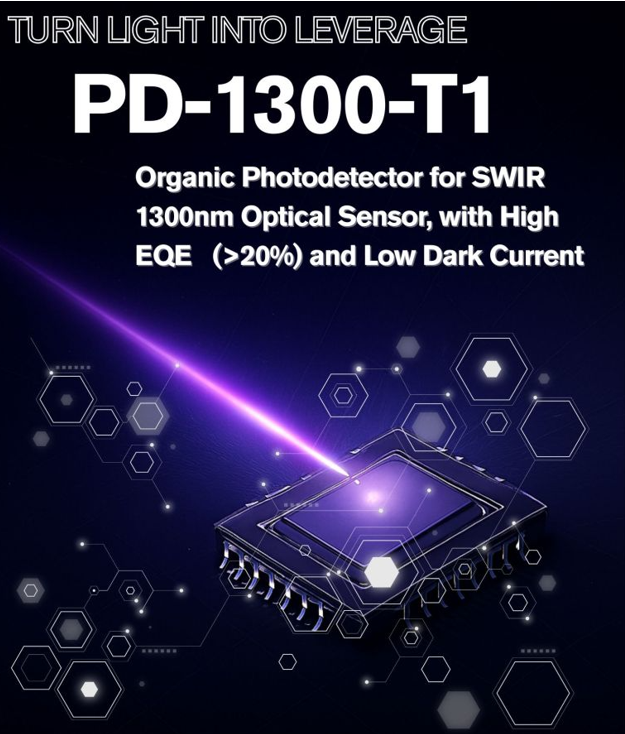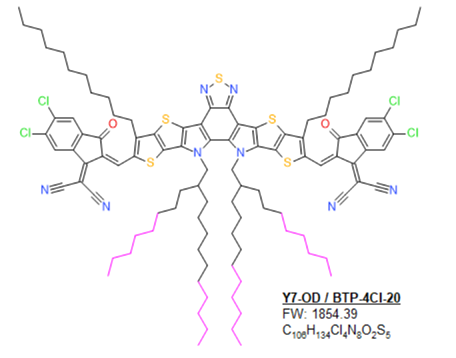An extended family of D − A copolymers, poly[2,5-bis(alkyl)pyrrolo[3,4- c ]pyrrole-1,4( 2H , 5H )-dione- alt -5,5′-di(thiophen-2-yl)-2,2′-( E )-2-(2-(thiophen-2-yl)vinyl) thiophene], (PDVTs, see structures below) is now at your choice for your research in OTFT and other organic electronic devices.
OPD
PDPP4T, DPP4T, DPP-4T, pDPP, PDQT, CAS 1267540-03-3
PDPP4T, also referred as DPP4T, DPP-4T, pDPP, PDQT [CAS 1267540-03-3] is made with higher molecular weight for higher performance. For more information, please click the typical COA linked below.
SWIR-OPD, benchmark PD1300T1, extremely low dark current and high detectivity
Thanksgiving release: PD1300T1, new benchmarking polymeric donor for SWIR-OPD with peak sensitivity approaches 1300nm, extremely low dark current and high detectivity.
To learn more, please click the link below:
1M: NFA1800 L6 NIR-OPD. You: the first to report
Will you be the first to test and report this whole new NFA, NIR1800, L6 with an absorption up to 1800nm? Please check the link below and let us know how you can explore its application. 800-1800nm NFA 1M-L6_20250825
NDI-B, a conjugated zwitterion for long life OPV OPD
NDI-B, a conjugated zwitterion and ultraviolet-resistant cathode interfacial material for long life of organic electronics, for more information, please consult the typic COA linked below:
CO8-X-1M, L4, NIR-OPD, absorption from 800 -1800nm
New NIR NFA for high-sensitivity organic photodetectors (OPDs) with strong near-infrared (NIR) photoresponse, L4, see the linked COA below for more information:
PBOF WBG wide bandgap ST-OPV ST-OSC
PBOF: an ultrawide bandgap polymer donor with an optical band-gap to 2.20 eV. The opaque OSCs based on PBOF can afford a PCE of 15.60% in the binary device and a PCE of 16.40% in the ternary device due to the good charge transport property of the polymer and optimal active layer morphology. The EQE spectra of the PBOF-based opaque OSCs delivered a remarkable concave coverage in the visible region that matches well with the human eye photopic response spectrum. As a result, the ST-OSCs based on PBOF afforded a PCE over 10% with an AVT over 30% without optical modulation.








